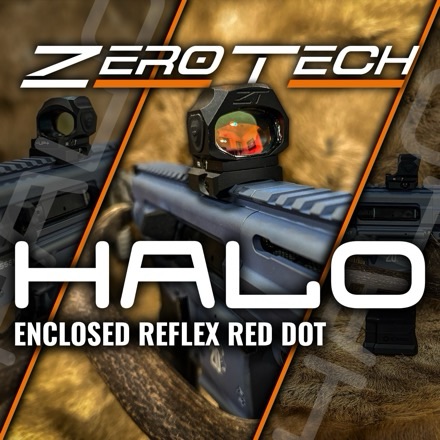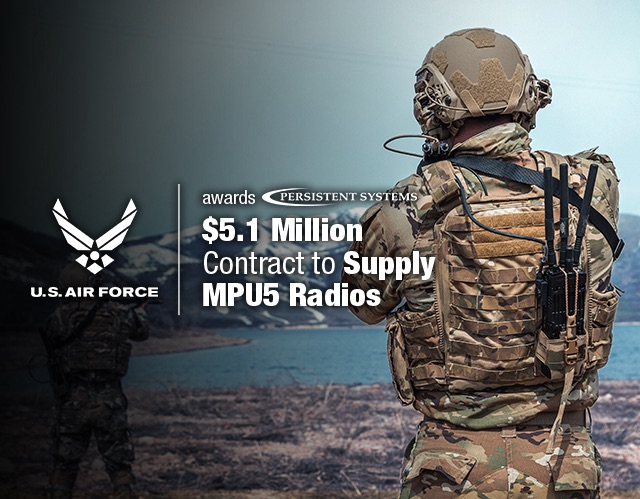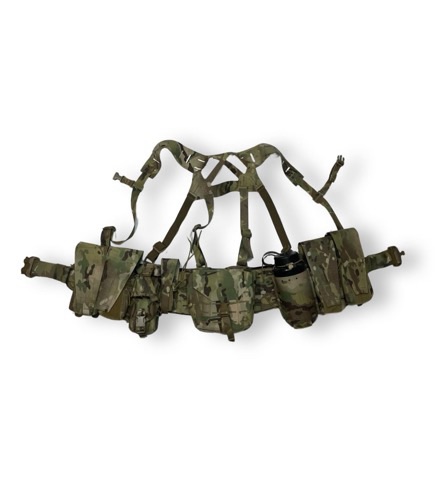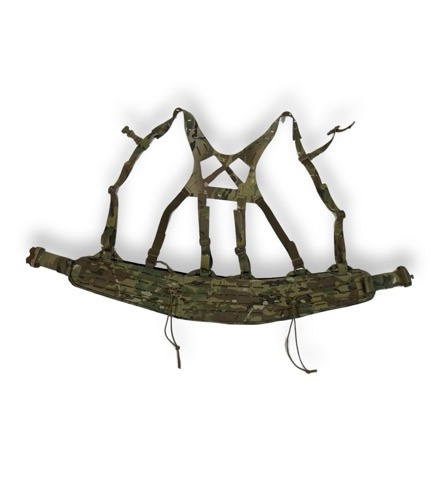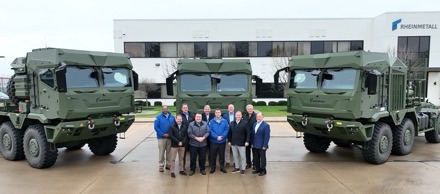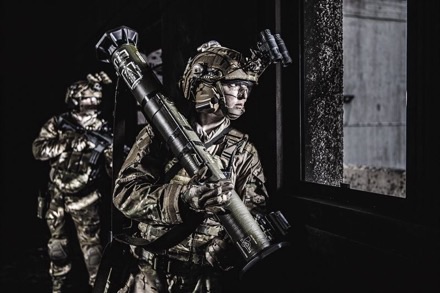
CAMP GRAYLING, Mich. – Snowflakes floated to the ground, bringing a hushed quiet to the darkened woods. Aside from the falling snow settling to the ground, the only sound was the muffled swishing of Soldiers as they pushed through knee-high snowdrifts toward their objective. That still quietness was vanquished by small-arms fire as muzzle flashes erupted in front of them.
“Contact right,” somebody called out and returned fire.
Movement commands were shouted as the Soldiers responded to the attack. The darkness, snow and cold were all elements they had to battle, and the Soldiers had just come across the other element they had to fight: the training exercise’s opposing forces, or OPFOR.
“The first role of the OPFOR is to give the rotational training units, the RTUs, a realistic look as to what they may see on the battlefield,” said Sgt. 1st Class Todd Teuling, the noncommissioned officer in charge of the OPFOR during exercise Northern Strike 24-1, a winter training exercise hosted by the Michigan National Guard at Camp Grayling Maneuver Training Center and the Alpena Combat Training Center in late January.
During the exercise, elements of the Army’s 5th Special Forces Group operated with close air support from Air Force and Michigan Air National Guard units while Michigan Army Guard units provided mortar and helicopter support.
Meanwhile, the Special Forces Soldiers had to plan and fight against the opposing forces, made up of Soldiers from Michigan Army Guard units.
“We work with the RTU’s leadership and kind of get an idea of what they want their Soldiers to see,” said Teuling. “We work together to plan — how many OPFOR, what kind of weapons and what kind of simulated pyro or explosives they want them to see, and they want their Soldiers to react to.”
Though the training scenario may be planned out — such as the RTU conducting a raid or an assault on target area — the Soldiers on the ground must plan for the mission and then react to the opposing forces’ tactics and movements as the scenario unfolds.
“Last night we were just doing a roving patrol,” said Teuling. “We kind of knew where were; the intent was to do a patrol and then to go attack them.”
Teuling’s team then moved in to where they thought the Special Forces team was positioned.
“Our OPFOR was in the woods with them and almost right on top of them, coincidentally,” he said. “It was just kind of perfect. And then they attacked them [using blank ammunition] and the RTU did exactly what they were supposed to do and got the training they wanted.”
Just as the Special Forces Soldiers must shift in response to the OPFOR’s action, their supporting elements must also do the same.
For Soldiers with Headquarters and Headquarters Company, 1st Battalion, 125th Infantry Regiment, Michigan Army National Guard, that may mean firing illumination rounds during a night mission before shifting to other types of rounds.
“The Special Forces guys, they’re on an objective or they’re maneuvering somewhere. They think they see something hundreds of meters in front of them. They’re not sure what it is. [They can] call in for illumination rounds,” said Staff Sgt. Alex Reams, a squad leader with the unit. The illumination rounds would then allow the observer on the ground to assess the situation and relay a follow-on fire mission.
“It gives the observer the option and the ability to see what’s on the ground and to then call in an effective fire [mission],” he said.
For the mortar teams, that means adjusting quickly to a changing situation. It may mean firing illumination rounds first, and then moments later following up with high explosive rounds on specific target areas. Making those adjustments can be taxing.
“The stress in the scenario is knowing that lives depend on your fire missions. Every second counts,” said Sgt. Michael Smith, a mortar team leader with HHC, 1st Battalion, 125th Infantry Regiment.
Taking part in exercises like Northern Strike helps strengthen the mortar team’s capabilities.
“The proficiency behind it is we train as we fight,” said Smith, adding that planning is a key element to being able to execute a fire mission.
“What do we have to do to mitigate and make it as safe as possible for our elements at the end of the day but be as deadly as possible to the opposition?” said Smith.
Planning is also key for the OPFOR, said Teuling.
“We have to plan months in advance how much blank ammunition we need and how much pyro we need, how many [opposing forces] uniforms we need,” he said. “So, there’s a lot of planning that goes into it, starts almost a year out before the exercise.”
Just as much planning goes into each OPFOR mission once the exercise starts, with the opposing forces team often basing their plans off those of the training unit.
“We build off from what they have to help plan ours so we know where to attack them or where we need to set up so we can ambush them, depending on what the mission or the objectives are,” he said. The OPFOR Soldiers then take those mission planning and tactical skills back to their home units.
But it’s executing those missions that are one of Teuling’s favorite parts of the exercise.
“I like getting out in the field and being part of the injects, you know, doing the attacks and just seeing how everything plays out and seeing how the RTUs and the Soldiers are reacting,” he said. “Even though it’s simulated, it’s training, you still get a bit of adrenaline going.”
By SFC Jon Soucy, National Guard Bureau
